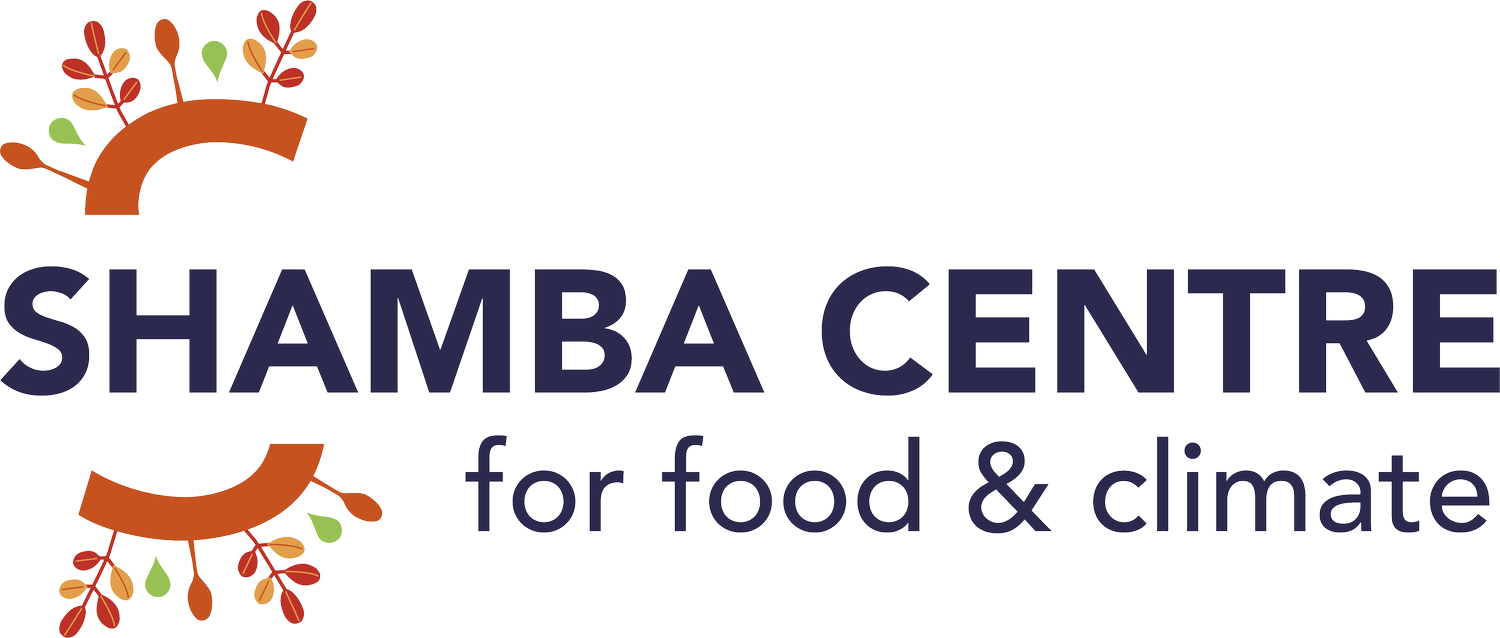
Translating our advocacy into action: tracking and reducing our climate impact
2 July 2025, Kamal El Harty, Sustainable Finance Advisor
How can we be the change we want to see? It begins with practicing what we advocate and holding ourselves accountable for our actions. In 2024, we took steps in this direction by measuring and benchmarking our greenhouse gas emissions using the definitions from the Greenhouse Gas Protocol. The results show that Scope 3 emissions constitute the largest share of our greenhouse gas emissions followed by Scope 2. We do not have any Scope 1 emissions.
Based on these results, we plan to take steps to reduce our emissions and undertake this exercise every year.
The importance of measuring our emissions
We have made these measurements for several reasons. First, in understanding our emissions, we are aligning with our values and mission. The Shamba Centre is a not-for-profit initiative founded in 2022 to help transform global food systems to empower small producers and enterprises, make food value chains more equitable, reduce greenhouse gas emissions, and restore nature. Measuring and managing our emissions ensures coherence between our advocacy for climate and our actions to reduce our greenhouse gas emissions.
Second, transparency and accountability are two of our core principles. By calculating and sharing our carbon footprint, we are demonstrating our commitment of how we aim to be part of the solution. Measuring our emissions begins with a baseline and allows us to identify how we can operate more sustainably in the future.
Finally, by making a public commitment to climate responsibility, we are leading by example. We are showing that climate action is possible and necessary. And we are credible as we call on others to take similar action.
Methodology and detailed results
Our 2024 greenhouse gas emissions inventory covered our activities from January to December 2024. We assessed emissions across three categories. Scope 1 emissions — direct emissions from sources we own or control, Scope 2 emissions — those associated with purchased electricity, heating, and cooling, and Scope 3 emissions — all other indirect emissions.
Scope 1 emission were not reported, as the Shamba Centre does not own vehicles or office spaces. We therefore do not generate emissions from onsite fuel use or energy production.
Scope 2 emissions were estimated based on energy used by team members for laptops, monitors, lighting, and temperature control in both office and home workspaces. These account for 5.3% of our total emissions. Within this category, purchased heating is the largest contributor at 3.4%, followed by electricity at 1.5% and cooling at 0.5% (see Table 1).
Scope 3 emissions represent the largest portion of our carbon footprint, accounting for 94.7% of total emissions. These were calculated based on business travel and commutes to our co-working spaces as well as air travel, rented vehicles, and public transport. Business travel alone accounts for 94.0% of total emissions.
Across all scopes, the Shamba Center’s greenhouse gas emissions for 2024 total 56.2 tCO₂e.
We used multiple data sources to calculate emissions. Employee working hours were used to estimate electricity, heating, and cooling demand. Country-specific grid emission factors were obtained from Carbon Footprint Ltd. Air travel emissions were based on estimates from Google Flights. Data on local commuting emissions from public transport were drawn from SNCF Connect and the International Growth Centre. Technical references from GreenMatch, Nordictec-Store, and Verda Vento informed assumptions about the energy consumption of heating and cooling systems.
Next steps
Results show that business travel is by far our largest source of emissions, followed by electricity, heating, and cooling used across employee workspaces. Given the Shamba Center’s limited de-centralized infrastructure, with offices in Geneva and Kigali and a team working from home offices in many countries, we relied on assumptions grounded in international best practices, using standard emission factors to ensure consistency and comparability. These findings provide a first view of our operational footprint and clearly point to where action is most needed.
Based on this baseline, we plan to take several steps. In 2025, our primary focus will be on reducing emissions from air travel, which account for over 90% of our total emissions. We will work closely with our travel agent to prioritize flights with lower carbon footprints while balancing factors such as ticket prices, number of stops, and distance traveled.
In addition, we will encourage employees to use electricity from renewable sources, choose energy-efficient equipment, and practice energy-saving habits for lighting, heating, and cooling. We will also promote sustainable commuting options, such as using low-carbon public transportation.
To improve our carbon reporting, we will implement real-time flight emissions tracking at the time of booking and expand our reporting scope to include emissions from cloud computing, purchased goods, waste disposal, and organized events. These steps will help us deepen our understanding of our impact and strengthen our commitment to sustainability.
Measuring our greenhouse gas emissions is not just a technical exercise—it is a strategic act that reinforces our mission, improves effectiveness, and models responsible leadership. Climate accountability begins with knowing our footprint and taking action.
For further information, read our full report: Shamba Centre’s Greenhouse Gas Emissions Report in 2024.

